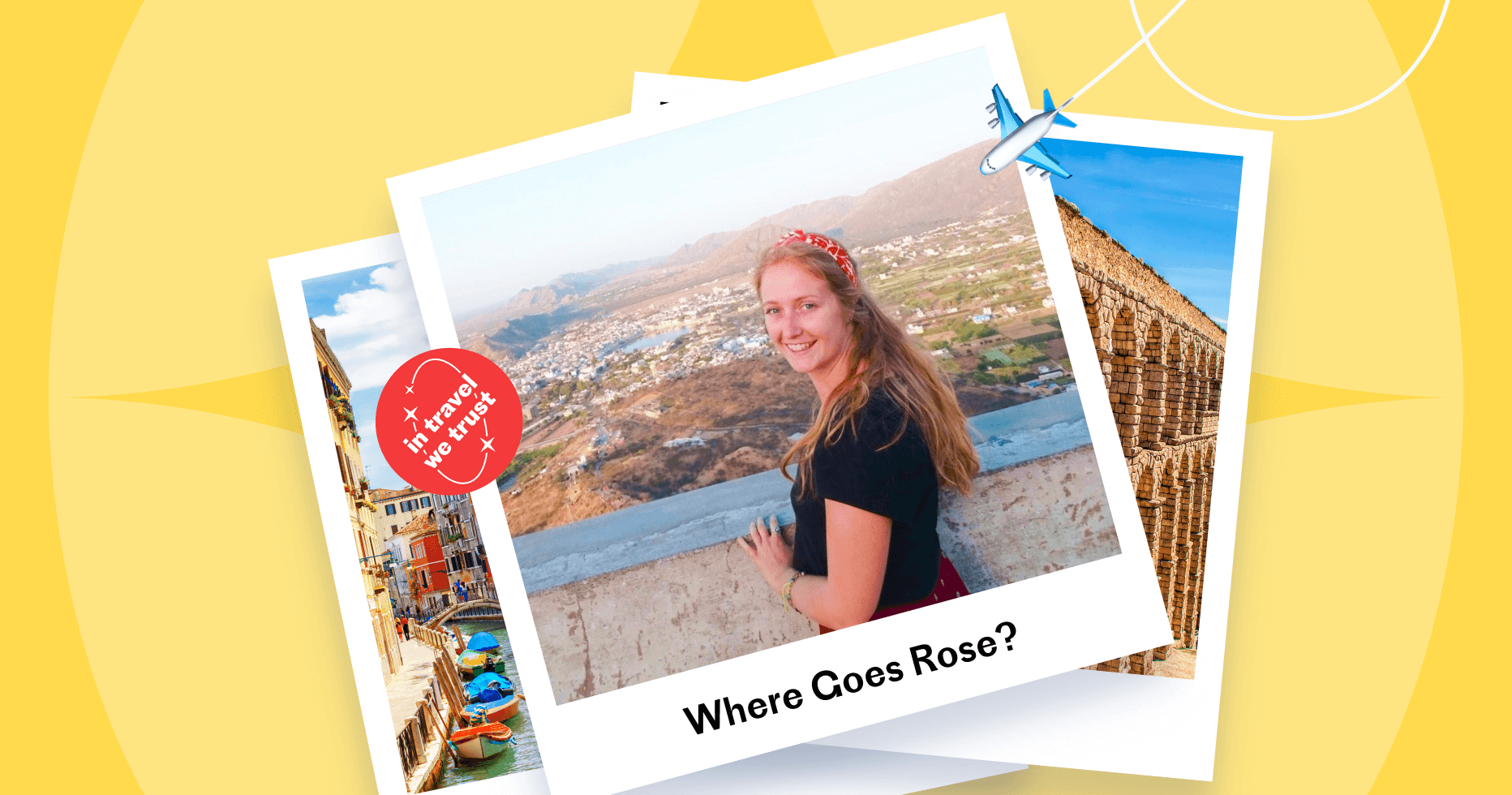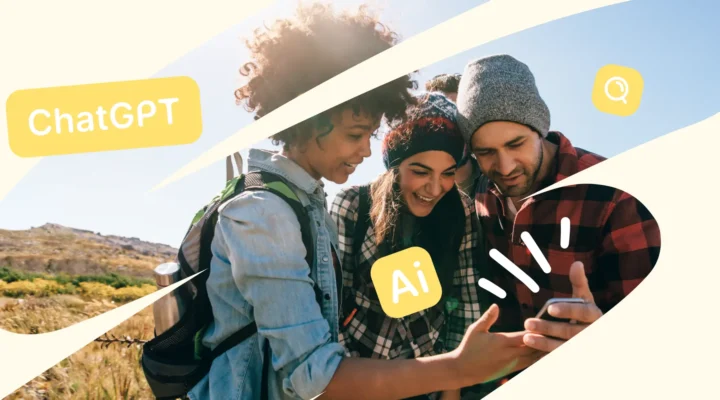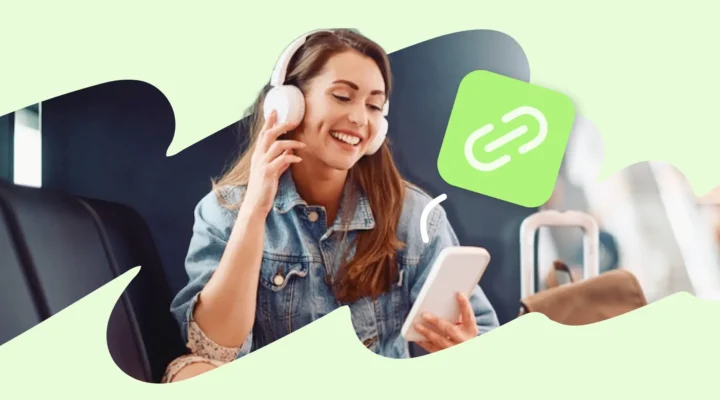How It All Began
I have been creating travel content since taking a backpacking trip in Asia in 2015.
During that time, my website had an entirely different name and was just a WordPress account. I didn’t buy a domain at the very beginning, so while technically it was the same website, I had to migrate all my content from the WordPress subdomain to my own domain.
At the beginning, I was travelling mostly with friends, but within a year, most of my travel was solo. From 2017, my blog transformed into a solo female travel blog that focused on travelling alone as a woman. I chose this niche since I knew that I could provide other people with advice on this topic and bring a community together.
I initially started writing without monetizing my content. Like a lot of other bloggers, my early posts were a bit like a personal diary, in which I was sharing some photos and letting my friends and family know what I was doing and where I was going. As I began enjoying it more, I started writing more for an audience and, since 2018, I became interested in monetization.
I have never taken any courses. Instead, I just started and did things my own way. Of course, I read some blogs to get basic information and Googled answers to my questions. I met quite a few other people online who have helped me on my blogging journey. Fortunately, I even met some other bloggers in person during my travels in Vietnam and we helped each other.
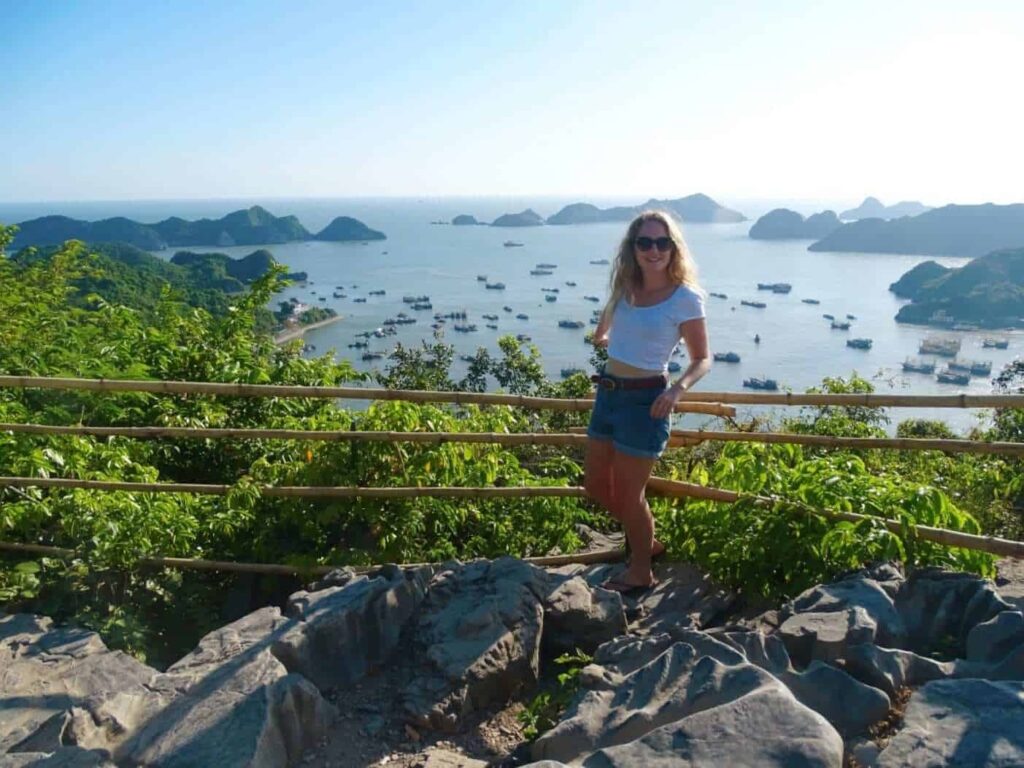
My First Blog Income
When I went to Asia, in 2017, my blog was not making money yet. At that time, I was also doing freelance writing to earn some money whilst travelling and building my blog. However, I found it difficult to earn a lot through freelance travel writing because the niche was highly competitive, which led to very low rates.
While traveling in South Africa, in 2017, I started to notice that other travel bloggers were actually making a living from their blogs. In fact, their blogs were actually their jobs. So, I had a moment in which I thought: “Oh, okay. I’m already doing this as a hobby, but maybe I could monetize it as well?”
At the end of that trip, I told myself: “Okay, go home, get a decent computer, and let’s really try to do this.” Before this, I was updating my blog on my phone, which was just not going to work if I wanted to scale the project. Seeing other people monetize travel content showed that making money from a travel blog was possible.
In 2018, I had attracted around 3,000 readers in a few months. At that point, I wasn’t anywhere near making money, but I was quite ambitious. I knew that I loved to travel and I loved writing. So, if I could do them together to earn a living, I wouldn’t need to work in an office.
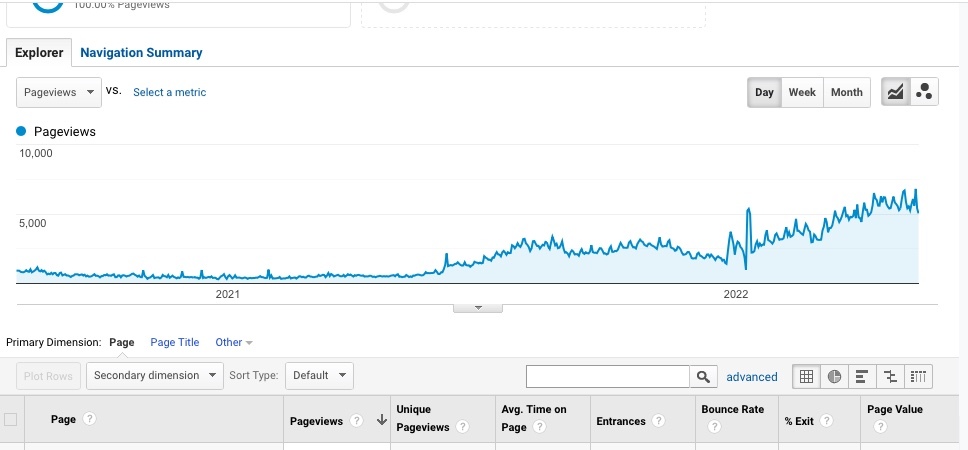
Affiliate programs were one of the first ways I began to experiment with marketing. At that time, I couldn’t join Mediavine or similar networks, as my blog had such a low traffic volume. I was only able to join the Mediavine network once I reached 25,000 monthly readers (now, they have increased this limit even more to 50,000 readers).
So, unless you start out with one of the smaller ad networks, affiliate marketing will probably be one of your earliest income sources. However, this approach is only for affiliates. The more traffic, the better. Of course, your earnings also depend on your audience and traffic volume.
In the beginning, I also sold a few sponsored posts on my Instagram and website. Starting out, I’d was usually more likely to have something, such as an experience, hotel stay, or flight, covered by a company in exchange for a promotion than to receive a payment.
I got my blog truly monetized in early 2020 and now it generates approximately €3,500 per month. Once I began making money from my blog, I stopped writing copy for anybody else, since I prefer working for myself without clients or bosses. This just works better for me because I can be in charge of my work and express my creativity as much as I want. Also, I’m not waiting for anyone to pay me if I have my own income sources. Creating my own travel content allows me to be more creative and independent.
How to Monetize a Solo Female Travel Blog
I have three income sources:
- Advertising
- Affiliate marketing
- Brand collaborations
In total, these three sources generate about $1,700 per month and, in some months, up to $3,500. Since there are still some COVID-related travel restrictions, I am certain that my blog can generate even more at the current rates once the restrictions are completely lifted.
I’ve heard a lot of bloggers talk about earning massive amounts, such as $10,000 per month, from their travel blogs. While I’m not there yet, I am already earning enough to live in Europe and you can too.
Your total income depends not only on your methods of monetization, but your audience. Advertisers usually pay a lot more for readers coming from the US and the second-most for readers from Europe or Australia. If you’ve got a website with a lot of content about Asia, you will need a lot more readers to earn the same amount of income that you would from a smaller US audience.
In terms of affiliates, the approach works the same as any other form of advertising. If you’re targeting US or European readers, they’re more likely to make purchases and buy things based on your recommendations, thus, you will receive an overall higher income.
Affiliate Marketing
I have monetized my blog with affiliate marketing from the very beginning. Currently, I offer my audience:
- Hotels
- Travel insurances
- Tours and activities
I work with travel affiliate programs and share links to Amazon, which I monetize with Amazon Associates. Through travel affiliate programs, I work with well-known brands, such as Booking.com, as well as with some trusted local brands.
I really like to work through Travelpayouts, as it’s so convenient to have all the travel affiliate programs in one place. Travelpayouts allowed me to work with 10 affiliate programs simultaneously. I find the platform to be highly user-friendly compared to some others that I’ve tried.
Join the Travelpayouts partnership platform
Join todaybrands
I often receive suggestions from Natali, the Travelpayouts Customer Success Manager, such as posting this or that, paying attention to this program, and so on. That advice is always really useful, especially since, in other networks, I’ve never had direct contact with an actual person. Natali always responds to my questions and has had answers to everything I’ve asked so far.
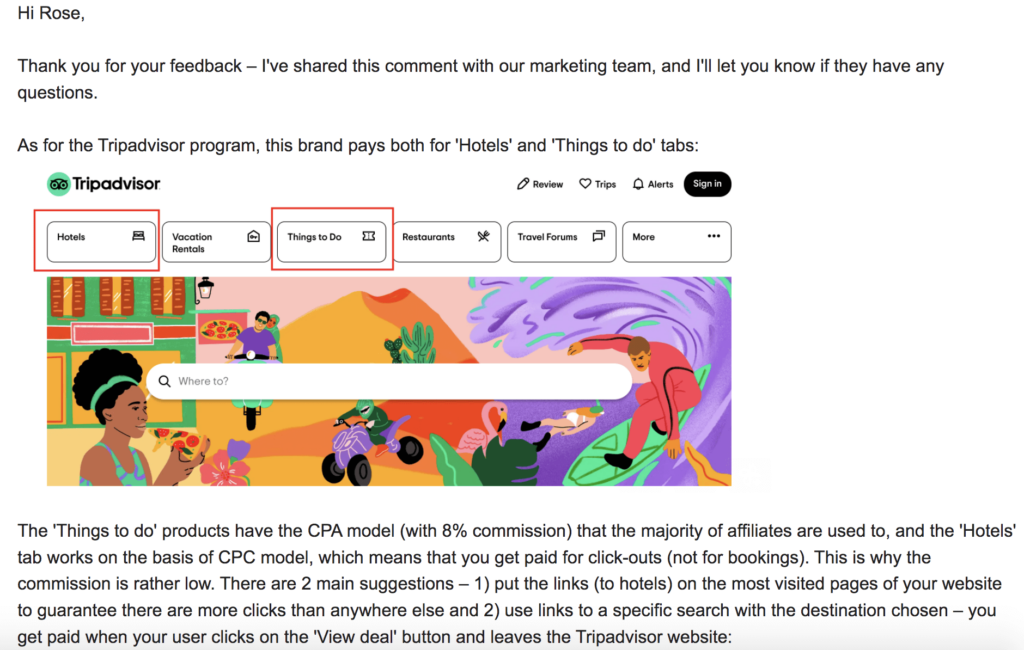
Traveling Solo
I really wanted to travel and none of my friends could take a year off work to join me. I would have preferred to travel with other people, but ultimately, my solo trips ended up being the ones that I enjoyed the most.
Solo travel doesn’t mean you are always alone. In fact, the exact opposite may be true. When you are traveling without company, it’s really easy to meet people when you want to, whether that’s through hostels or when staying with someone locally. I use the Facebook communities like expat groups or female travel groups, which make it quite easy to connect with people when I want to.
After my trip to Asia, in 2017, I have never planned a trip with other people. While traveling alone, I had the most independence. I could decide what I want to eat, where I want to stay, how much money I want to spend, and so on.
I tend to spend quite a long time in places that I visit because I have to work as well as sightseeing. If I am travelling with someone else, especially someone who doesn’t work for themselves, we’re not going to be on the same schedule. Thus, solo travel is the best match for my lifestyle, which I am sharing with my audience.
When you travel solo, you have an extra burden that people travelling in a group don’t need to deal with. For example, you’re doing all the planning, research, and booking, which can be quite a lot of work.
If you are a woman that is travelling alone, you might end up in situations that are more stressful for you than they would if you were travelling in a group. Ultimately, you need to be more aware of your surroundings and look after yourself, which can be tiring. As a result of all my solo trips, I’m more mindful of my limitations, especially as a woman who works while travelling alone. As a result, I’m a slower traveler, which is not a bad thing.
Specifics of Solo Female Travel Blogs
I can share my opinion on the specifics of solo female blogging based on my experience with my blog: wheregoesrose.com.
Traffic Sources
Currently, most of my traffic comes through Google, followed by Pinterest and then Instagram. However, in the beginning, it was the opposite. In my experience, social networks are a fast track to attracting traffic for new blogs.
SEO is my primary traffic source. Even if you have a lot of followers on your Instagram account, you will hardly generate any traffic for each post. For example, if I wrote a blog post on Zagreb and then posted it on my Instagram and Instagram stories, not all my followers would think to go there. As a result, I would get traffic, but not as much as I would get from organic traffic on Google.
Content Creation
I used to be able to write an entire blog post in the morning and have it published by the afternoon. However, I am currently aiming to make no more than two posts per week on my blog, as quality articles take time to craft.
To ensure that posts actually perform well on Google, they must be well researched. You need the time to actually go visit places, look around, take photos, and so on.
My article writing process looks like this:
- Keyword/topic research
- Writing the post
- Editing
- Proofreading
- Publishing
- Promoting
At the same time, I also have to maintain old blog posts. Posts that I wrote two or three years ago might need to be refreshed. For example, I might need to update links or change some affiliates. I spend about half my time on old posts and half my time on new posts.
I am currently considering sharing some of my duties with a freelancer or one of my friends, who I can pay in exchange for some help, especially with old posts. I’ve got a lot of blog posts about Asia that I’ve sort of abandoned over the past two years because people haven’t been able to travel there. It’ll be interesting to try working with somebody else, seeing how that goes, and then hiring more people if I am satisfied with the results.
The Impact of COVID
Due to the pandemic and subsequent travel restrictions, I changed up my topics a bit and wrote more about local travels in the United Kingdom. I produced more local content, especially posts about day trips, and wasn’t writing about Asia or other locations that were closed to foreigners.
I noticed that many bloggers really had to change the direction of their content and began writing about different topics. For me, drastically changing my content would have been quite forced. I don’t think it would have been very authentic, as I’m not really interested in gadgets or many of the other things that most people began to write about during the pandemic. So, I didn’t change my blog much and mostly prefer to wait and see what happens down the line.
The first month of the pandemic was really bad, but by last summer, things were starting to improve, especially since people were getting vaccinated and could plan more trips. I hope things continue to move in the same upward trajectory.
How to Run a Travel Blog in 2022?
If you haven’t started your travel blog yet, it’s not too late. You can start at any time, but to be successful, you should really have a good niche and a good idea of what you’re going to be writing about.
For example, if you want to make a blog solely about travel, it might be too late for you to attract a significant audience. Instead, choose a specific niche and do what you love. So many travel blogs already exist. To stand out, you should pick a certain location, whether it’s a country or a city, or a certain style of travel, whether budget, couple, childcare, business, etc. If you can find a gap that you can fill while providing value to your audience, things will work out in your favor.
I can’t call myself a guru, but through experience, I’ve discovered some tricks that I want to share with you:
- To start out, it’s good to have social media pages that accompany your blog, since it takes a long time to go from starting a website to getting traffic from Google. Traffic from social media is usually much faster to generate.
- Use keyword search tools to know what people are searching for, so you can provide them with answers and direct traffic to your blog.
- To receive higher income per reader, primarily target a US audience.
- You can always put affiliates tools into preexisting content. However, I think affiliates do really well when they create content from scratch with the intention of sharing their affiliate tools. For example, a link to a hotel in Bali is always going to perform better if it’s located in an article about “Where to Stay in Bali”, rather than at the end of a Bali itinerary.
- If you are mindful about affiliates, even before deciding what you’re going to write about, you are going to have more success.
- Keep the sales funnel in mind. If you’re writing about a hotel and you’ve got customers who are Googling hotels, they’re already quite far down that sales funnel and have a higher likelihood of booking a hotel. That means you will receive more income on affiliate programs, especially if you have people in your audience who are closer to making actual purchases.
- Share relevant goods and services. Sometimes, I see irrelevant mentions in some blogs, such as a random service being mentioned in an unexpected place in the post, which the visitor is probably not going to click on. To avoid this, I always try and keep my content quite tailored.
—
Want to share your story? Travelpayouts welcomes all bloggers with any travel-related experience. Write to us at an@travelpayouts.com with the following subject: “Story for the Travelpayouts Blog”.

